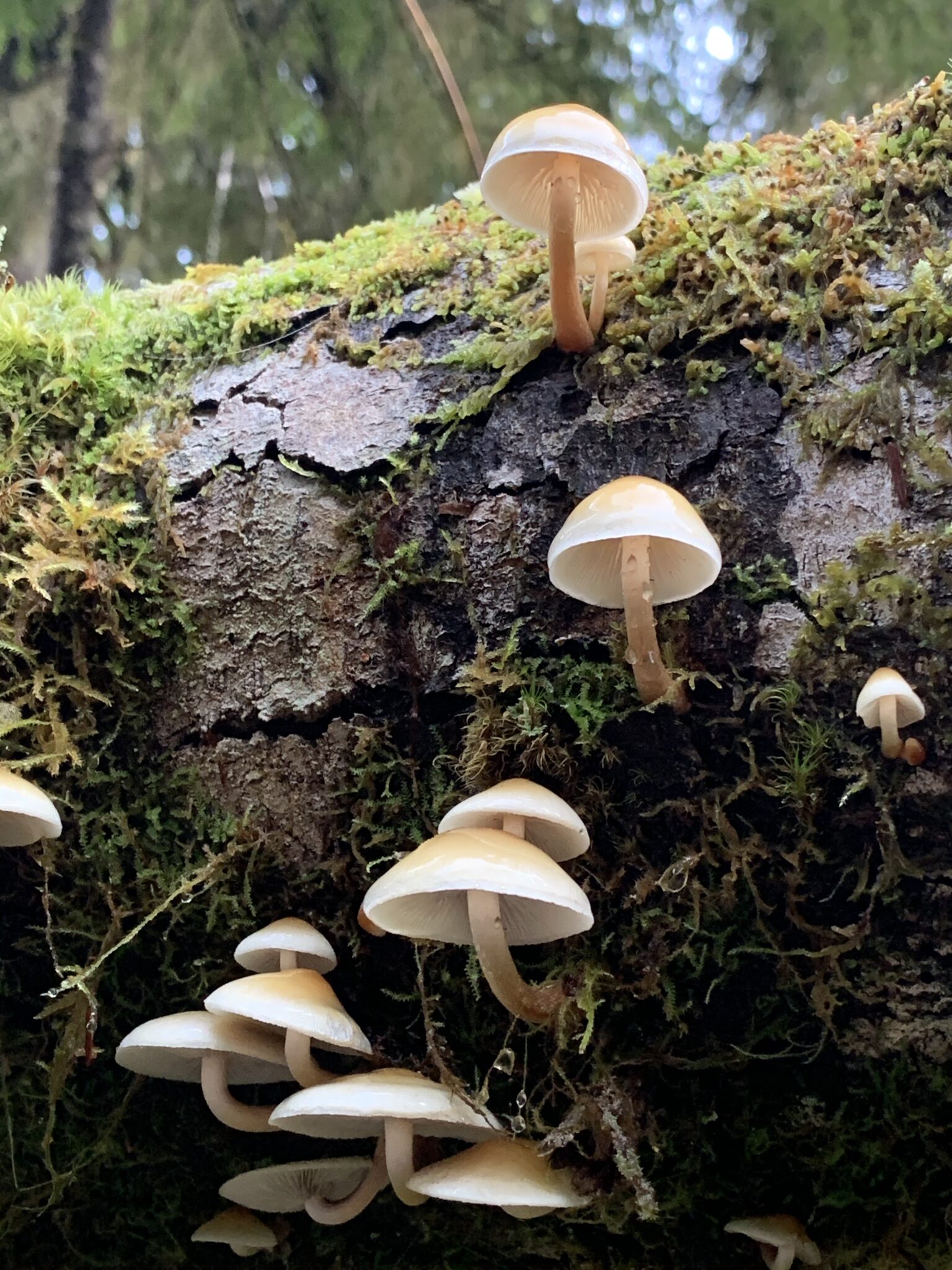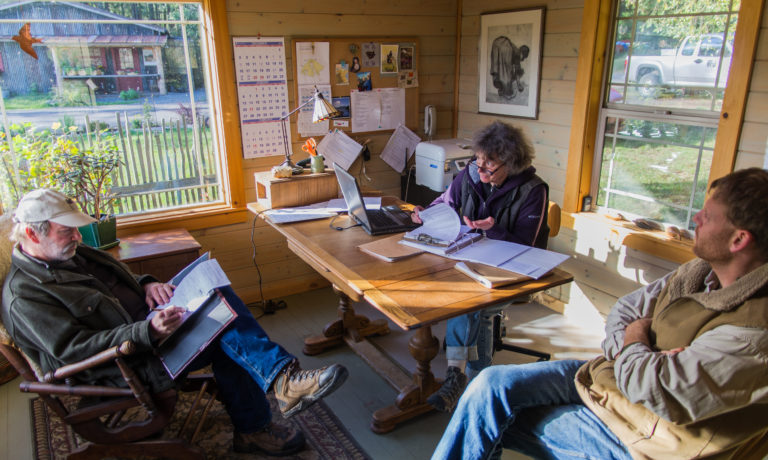
Resources for Funding Forest Stewardship
ESTABLISHING A HEALTHY FOREST DOESN’T HAVE TO MEAN BREAKING THE BANK
Many public agencies offer funding to help forest owners pay for stewardship activities and realize their woodland goals. Whether you envision a habitat-rich stand bursting with forage shrubs and large snags; a business plan for timber harvest on your land; or an aesthetic retreat replete with meandering trails, there’s funding available to help you get there.
The Environmental Quality Incentives Program (EQIP) helps landowners access technical expertise and financial resources to develop and complete conservation practices that improve the health and productivity of their land. If you are interested in applying for EQIP, contact your local NRCS office to discuss the projects you have in mind. For more information about EQIP, check out our EQIP page. We realize EQIP may not be the right fit for everyone’s needs, so we’ve included additional resources below, organized by state.

PROGRAMS IN OREGON
COST-SHARE PROGRAMS
- Oregon Department of Forestry (ODF) – ODF can help landowners with a minimum of 10 acres develop a forest management plan by providing up to 75% cost-share reimbursement through their Forest Stewardship Program.
- EQIP funding for forest management plans – NRCS provides funding for landowners to hire a forestry consultant (they call them Technical Service Providers) to develop management plans (they call the plans Conservation Activity Plans, or CAPs). Contact your local NRCS office to discuss the CAP program for your county.
- Wildlife Habitat Conservation and Management Program (WHCMP) – The WHCMP offers a property tax incentive to private landowners who want to provide wildlife habitat on their properties instead of, or in addition to, farming, growing timber or other land uses. Land subject to an approved wildlife habitat conservation and management plan receives a wildlife habitat special assessment, where property taxes are assessed at the relatively low value that would apply if the land were being farmed or used for commercial forestry.
- Oregon Watershed Enhancement Board – Provides grants to help protect and restore healthy watersheds and natural habitats that support thriving communities and strong economies.
- Agricultural Conservation Easement Program – The Agricultural Conservation Easement Program (ACEP) provides financial and technical assistance to help conserve agricultural lands and wetlands and their related benefits.
- Conservation Stewardship Program – The Conservation Stewardship Program (CSP) offers an opportunity for forestland managers to enhance their agricultural operations while adopting conservation activities that can improve crop quality, improve soil health, and improve water quality.
- Conservation Reserve Enhancement Program (OR) – This program allows landowners to receive incentive payments from the U.S. Department of Agriculture (USDA) Farm Service Agency for establishing long-term, riparian buffers on eligible land.
- Bark Beetle Mitigation Program – The goal of the Bark Beetle Mitigation Fund is to assist family forestland owners in Oregon in preventing and helping restore areas affected by bark beetles.
- Forest Legacy Program – Forest Legacy provides funds for eligible private forestlands for the purchase of development rights through either conservation easement or fee-title acquisition into public ownership.
DO-IT-YOURSELF
- Oregon Forest Management Plan Template – Oregon State University Extension has developed guidelines for developing a forest management plan.
- Forest Management Planning Resources – More resources for small forest owners to get started.
- Wetlands Reserve Program – The goal is to restore, protect, and enhance wetland functions and values on private property.
OTHER
- Contact an Oregon Department of Forestry Stewardship Forester for assistance in starting or reviewing your plan.
- Hire a natural resource consultant to prepare a plan for you.
- Contact your local Oregon State University Extension office to sign up for woodland management short courses.
PROGRAMS IN WASHINGTON
COST-SHARE PROGRAMS
- EQIP funding for forest management plans – The Natural Resources Conservation Service provides funding for landowners to hire a forestry consultant (they call them Technical Service Providers) to develop management plans (they call them Conservation Activity Plans, or CAPs). Contact your local NRCS office to discuss the CAP program for your area.
- Agricultural Conservation Easement Program – The Agricultural Conservation Easement Program (ACEP) provides financial and technical assistance to help conserve agricultural lands and wetlands and their related benefits.
- Conservation Stewardship Program – The Conservation Stewardship Program (CSP) offers an opportunity for forestland managers to enhance their agricultural operations while adopting conservation activities that can improve crop quality, improve soil health, and improve water quality.
- Conservation Reserve Enhancement Program (WA) – The Conservation Reserve Enhancement Program (CREP) is a joint federal and state funded program that restores streamside habitat for salmon and protects that habitat for 10-15 years. CREP plants native trees and shrubs to improve stream conditions and enhance wetlands along salmon streams. All of the costs for these improvements are paid by the program.
- Family Forest Fish Passage Program – The Family Forest Fish Passage Program (FFFPP) assists private forestland owners in removing culverts and other stream crossing structures that keep trout, salmon, and other fish from reaching upstream habitat. The program funds the replacement of eligible barriers with new structures.
- Forestry Riparian Easement Program – The Forestry Riparian Easement Program (FREP) is a voluntary program that reimburses landowners for the value of the trees they are required to leave to protect fish habitat.
- Northeast Washington Fuels Reduction Collaboration – This project reduces and mitigates wildfire threats to Colville National Forest land and adjacent private property in Ferry, Stevens and Pend Oreille counties.
- King Conservation District Landowner Incentive Program – KCD’s Landowner Incentive Program (LIP) provides landowners with cost-share assistance to support implementation of conservation practices on private property. Landowner expenses associated with pre-approved conservation practices are matched with KCD cost-share funding at a ratio of 50% to 90% of the total cost of projects.
- Small Forest Landowner Regulation Assistance Program | WA – DNR – The Regulation Assistance program assists small forest landowners with questions related to the state’s Forest Practices Rules and the Forest Practices Application/Notification (FPA/N).
GUIDED TRAINING
- Forest Stewardship Coached Planning – Washington State University Extension’s flagship course can help landowners develop their own forest management plan, as well as gain in-depth knowledge about a wide variety of forest ecology and management topics. Courses start across the state at different times, refer to the link above to find out about the next class!
DO-IT-YOURSELF
- Washington State Integrated Forest Management Plan – Washington State Department of Natural Resources and partners developed a forest management plan template to help landowners write a plan for their forest.
OTHER
- Contact a Washington Department of Natural Resources Stewardship Forester for assistance in starting or reviewing your plan.
- Hire a natural resource consultant to prepare a plan for you.
Additional resources on funding stewardship and other topics are available in the NNRG Resource Library.
NNRG Resource Library
Banner photo by Matt Freeman-Gleason
